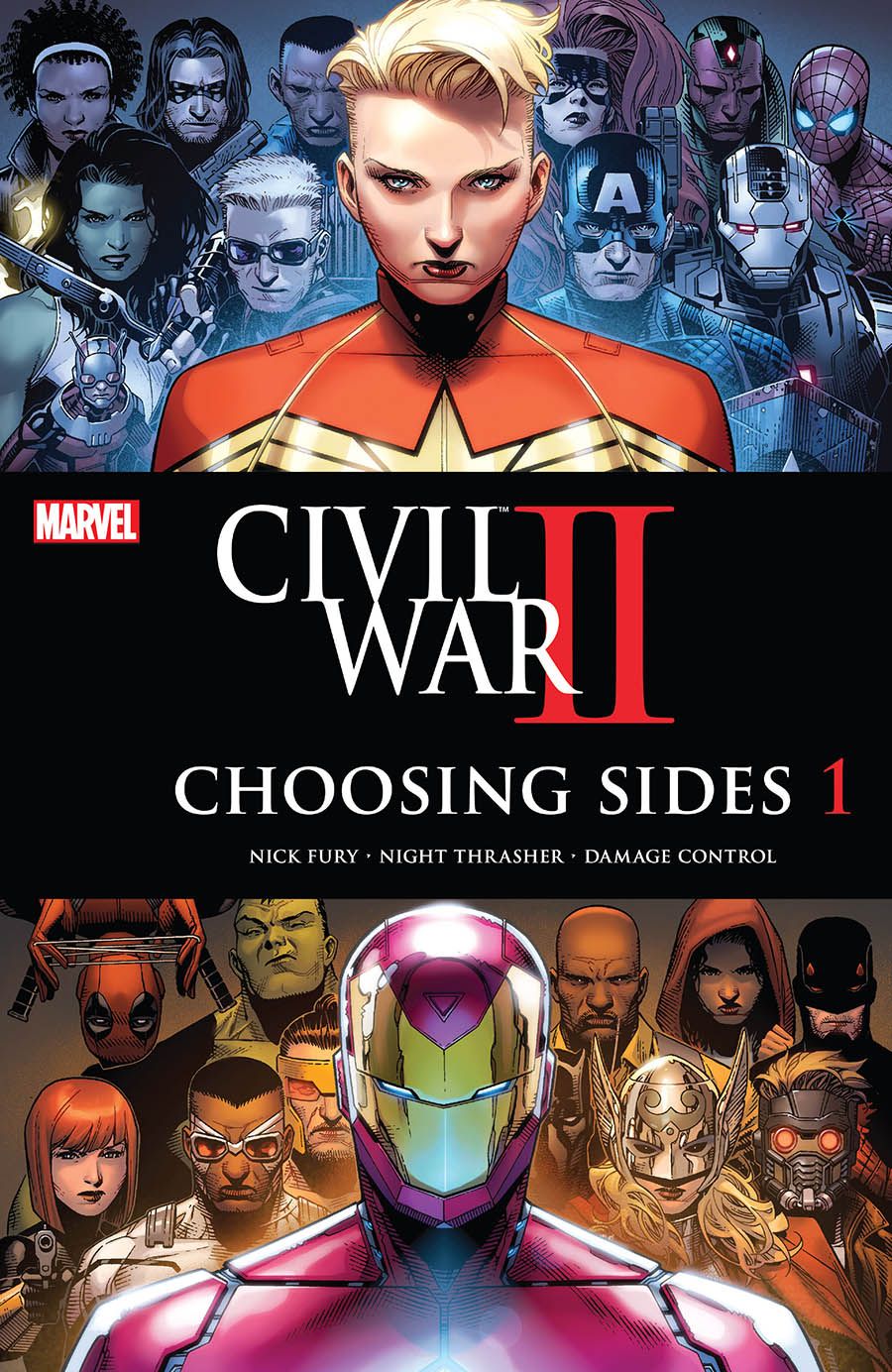Those expecting "Civil War II: Choosing Sides" #1 to be about characters choosing sides in "Civil War II" will be sorely disappointed. Though it has a catchy title inspired by the overall remit of the event, it's really just three stories set against the backdrop of the parent title, at least for this first outing. With that in mind (and leaving that potential disappointment aside), this first issue of the anthology miniseries is still slightly below average.
Declan Shalvey writes and draws Nick Fury for the anthology's lead piece, which is the first chapter in a multi-part story. Unfortunately, Shalvey's story barely moves, though that may be because there are still more parts to come. In this story, Fury heads out on a mission to stop a Hydra cell posing as S.H.I.E.L.D. agents, only to discover his backup is in on the plan. While there's talk that Ulysses has predicted Hydra's attack will destroy S.H.I.E.L.D. if not stopped, it still feels rather tenuous in terms of a connection, and it's little more than an extended fight scene. Unfortunately, Shalvey's art isn't as lively or energetic as is typical of his work, and it doesn't pick up the slack; Fury often looks strangely compressed and short, and the moment where he leaps through the air is incredibly stiff looking and very unrealistic. The explosion later in the issue looks great, though, and the moment where Fury's body smashes through the glass gives me hope we'll see some more of Shalvey's strengths in the chapters to come. For the moment, though, this story doesn't provide much of a lure to bring readers back for chapter 2.
Brandon Easton and Paul Davidson are next up to bat with a story starring the recently-revived Night Thrasher, but this is really little more than a piece showcasing the character's technological upgrades as he rescues a girl caught up in the initial attack from "Civil War II" #1. It's an odd piece that talks about Night Thrasher's skateboard one moment, then instantly tells us not to call it a skateboard the next, even as Night Thrasher rides around on it like, well, a skateboard. The problem is there's nothing that really makes this "Civil War II"-specific; this could be any attack, anywhere, where Night Thrasher saves a young girl. Our protagonist also comes across as a little distant, too; aside from a couple of snide remarks about Tony Stark, this doesn't give Night Thrasher much of a personality -- just a rundown of all of the new capabilities of his suit. Davidson's art puts that suit front and center throughout the story, but there's a lack of any real sense of motion going on here. The moment where Captain Marvel gets zapped and falls to the ground is a prime example: though she is actually falling with energy trails coming off of her, the image appears as though some sort of energy beam is holding her up, because it never looks like she is moving. In the end, if this is a try-out for Easton and Davidson to create a Night Thrasher series, there's nothing here that inspires me to read it.
In the end, the heavy lifting for "Civil War II: Choosing Sides" #1 goes to Chad Bowers, Chris Sims and Leonardo Romero for their Damage Control story. I'm always a little wary of other creators tackling a concept that was so closely wedded to Dwayne McDuffie and Ernie Colon's vision, but this story comes the closest I've seen to that overall feel. Bowers and Sims' script takes the original idea of Damage Control being a workplace comedy and runs with it, complete a subplot about a disastrous Damage Control commercial, even as the clean-up business tries to fix the mess left behind from "Civil War II" #1. There's a little romance going on and a whole lot of craziness in the form of a living steam shovel named Trull the Unhuman. It's so silly that it's hysterical, and Romero nails the bizarrely-menacing look of Trull, even as it will remind readers of a certain age of the children's book "Mike Mulligan and His Steam Shovel." Romero is good with more than living steam shovels, too; his characters have really nice looking faces and postures here, reminding me of artists with a similarly clean line, like Goran Sudzuka and Tonci Zonjic. In the end, it's this little story about Damage Control that ends up being the selling point for the comic, even as it ultimately has very little to do with "Civil War II," save for the fact there was a lot of wreckage afterwards.
Misleading subtitle aside, there is certainly a lot of potential in "Civil War II: Choosing Sides" #1. Unfortunately, however, only one out of three stories is memorable, so future issues will need to produce stronger pieces if readers are going to stick around for all six. In this chapter, Damage Control really performs the cleanup job.

